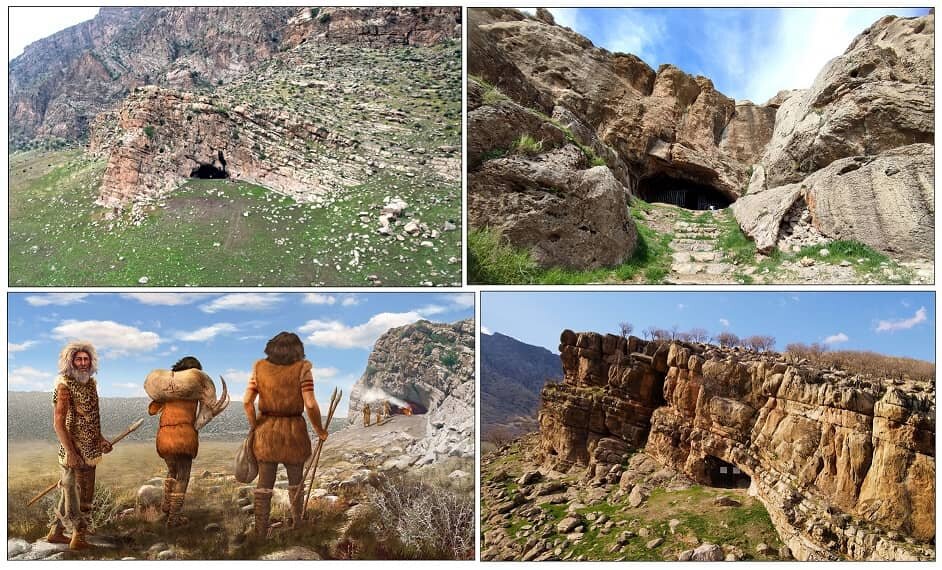Milestone recognition marks Iran’s first Paleolithic World Heritage site

TEHRAN - In a landmark announcement during the 47th session of the UNESCO World Heritage Committee on Friday, in Paris, the Prehistoric Sites of the Khorramabad Valley were officially inscribed on the UNESCO World Heritage list.
This marks a historic first for Iran -- the first time a cluster of sites primarily representing the Paleolithic period has received this prestigious recognition -- and a transformative moment for the global archaeological community.
Dr. Ata Hassanpour, Director General of Lorestan Cultural Heritage, Tourism and Handicrafts, emphasized the significance of the nomination. He explained to Tehran Times that “the dossier was prepared by a multidisciplinary team of archaeologists, tourism experts, and heritage professionals from key institutions including the Iranian Ministry of Cultural Heritage, the Office for the Inscription, Preservation and Revitalization of Intangible and Natural Heritage, Tourism and Handicrafts (IMCHTH), the Cultural Heritage, Tourism and Handicrafts Office (CHTH) of Lorestan, Shahid Beheshti University, and the National Museum of Iran.”
He added: “Situated in the heart of the western Zagros Mountains, the Khorramabad Valley has long served as a cultural and ecological corridor linking Mesopotamia, the Iranian Plateau, and Central Asia. Its dramatic karstic landscape is home to caves, rock shelters, and archaeological sites that preserve a continuous sequence of human occupation spanning more than 60,000 years, from the Paleolithic through the Neolithic, Chalcolithic, and Bronze Age.”
Dr. Jebrael Nokandeh, General Director of the National Museum of Iran, welcomed the UNESCO inscription and underscored the museum’s active role in the nomination process: “The National Museum of Iran takes great pride in contributing to this historic achievement, particularly in the preparation of the UNESCO nomination dossier for these remarkable prehistoric sites.” He noted that in 2024, the museum selected key artifacts from Yafteh Cave, Kunji Cave, Gar Arjeneh, Ghamari Cave, and Tappeh Abdol Hossain to support the creation of a new Prehistoric Gallery and the redesign of the Historical Gallery at the Lorestan Archaeology Museum.
The exhibition, inaugurated in September 2024 in the presence of the ICOMOS evaluator, Dr. Hatice Pamir, highlights cultural transitions across thousands of years in the Khorramabad Valley. Dr. Nokandeh also emphasized that archaeologists from the museum’s Paleolithic Department played a direct role in the scientific documentation of the caves for the nomination. He concluded: “With this inscription, the Khorramabad Valley stands as a globally recognized reference point for the preservation and interpretation of Iran’s Paleolithic heritage and the wider prehistoric landscape of the Zagros.”
Professor John D. Speth, Emeritus Professor of Anthropology and Curator Emeritus at the University of Michigan, who excavated Kunji Cave in 1969, stated to Tehran Times:
“The addition of Iran’s Khorramabad Valley Paleolithic Cave sites to UNESCO’s World Heritage List is truly wonderful news and significant recognition of their importance for understanding the origins and global spread of anatomically and behaviorally modern humans. Archaeological, fossil, and genetic evidence converge to indicate our species—modern humans or Homo sapiens—first emerged in sub-Saharan Africa ca. 300,000 years ago, spreading into Asia and Europe after about 65,000 years ago. Well-watered regions like the Levant, Anatolia, and the resource-rich highlands of Khorramabad Valley became critical homelands for these arrivals. As our ancestors expanded into Eurasia, they encountered, interbred with, perhaps fought, and ultimately replaced Eurasia’s native inhabitants—Neanderthals, Denisovans, and other ‘archaic’ populations. This period of encounter and interaction is among the most pivotal in human history. One of the most precious records of these foundational events is spectacularly preserved in Khorramabad’s caves.”
He added warmly, “I am deeply honored that our 1971 work at Kunji Cave—documenting its rich Middle Paleolithic layers alongside later Chalcolithic and Bronze Age burials—contributed to this dossier. To see it recognized as a component of Iran’s first Paleolithic World Heritage Site fills me with profound pride. This milestone also rekindles cherished memories of Khorramabad’s majestic valleys and the enduring kindness and hospitality of the Lur people who welcomed us half a century ago.”
Dr. Fereidoun Biglari, Head of the Paleolithic Department at the National Museum of Iran, who contributed to the UNESCO nomination and led recent excavations at Ghamari Cave, one of the key sites in the Khorramabad Valley, underscored the scientific value of the newly inscribed sites: “All five caves and rock shelters display strong evidence of Middle Paleolithic occupation, offering crucial data on Neanderthal lifeways, including their material culture, subsistence strategies, and potential interactions with early Homo sapiens, who entered the Zagros region around 45,000 years ago. These sites are central to understanding one of the most pivotal chapters in human evolutionary history.”
As Dr. Mohammad Hassan Talebian, Technical and Scientific Supervisor of the dossier, stated: “The inscription not only celebrates Iran’s rich prehistoric legacy, but also reaffirms its growing leadership in archaeological research and heritage protection. It signals a commitment to safeguarding sites of global significance and sharing their stories with the world — now and for generations to come.” He concluded, “The Khorramabad Valley stands as a global reference point for early human history, offering a model for the preservation and interpretation of prehistoric cultural landscapes.”
Among the valley’s most significant sites is Yafteh Cave, revealing some of the region’s earliest evidence of symbolic behavior by Homo sapiens. Equally notable, Ghamari Cave preserves remains from Neanderthal occupation followed by Chalcolithic pastoral communities, offering critical data on shifting human populations and evolving cultures in Southwest Asia.
AM
Leave a Comment